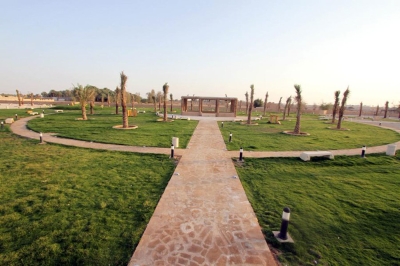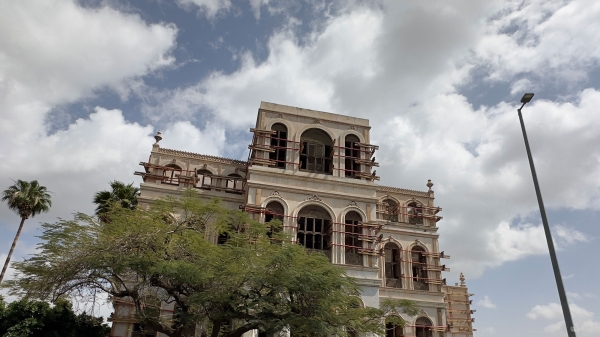
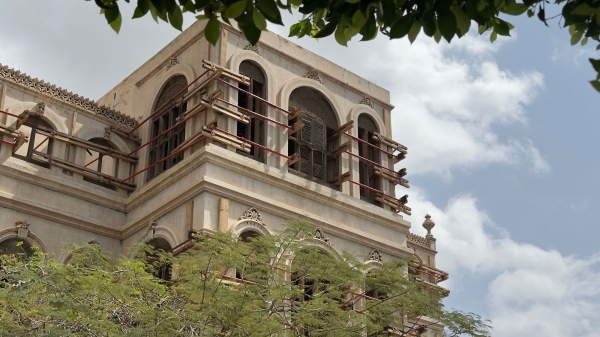
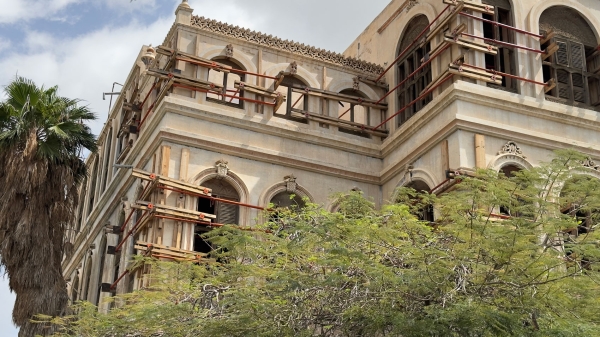
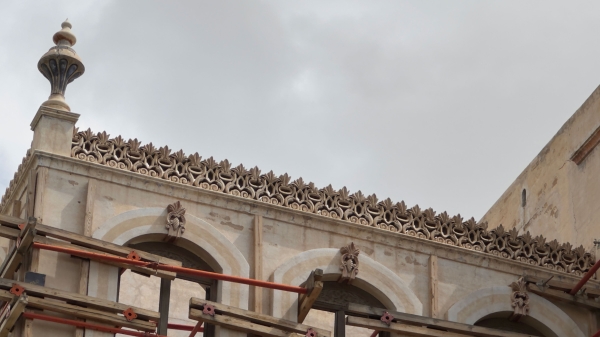
Al-Kateb Palace, also known as al-Kateb House, is one of the historical palaces in Taif Governorate, affiliated with Makkah al-Mukarramah Province, west of the Kingdom of Saudi Arabia. It is considered a historical landmark of Taif City. The palace was also called "an-Niyabah Palace" because King Faisal Bin Abdulaziz Al Saud, during his tenure as Deputy King in Hejaz, resided there during the summer months.
History of al-Kateb Palace
The construction of al-Kateb Palace began in 1897 in al-Salam neighborhood of Taif City. It was supervised by Mohammed Ali Abdulwahid, who served as the private secretary to Sharif Aoun al-Rafiq. Abdulwahid lived in the palace after its construction, which took three years to complete. In 1930, his sons inhabited the palace after renovating and repairing the damaged parts. They also built an annex on the eastern side, made of stone and clay.
Contents of al-Kateb Palace
Al-Kateb Palace consists of three floors built in the style of ancient Roman architecture. The palace covers a construction area of 762 m², while the total land area is 7,972 m². The structure is adorned with stone columns and semi-spiral decorations extending to the rooftops. It was strategically located within a fertile agricultural area in al-Salamah, outside the old walls of Taif City. To the east, the palace is bordered by a cul-de-sac and a courtyard, while to the west lies Imam al-Shafi’i Street. Abu Nawas Street is to the north, and al-Salamah Street is to the south. The main entrance leads to a large diwan (reception hall) with staircases on either side, connecting to the upper floors. The stair railings were designed with stone and marble. Another diwan extends from the northern courtyard of the palace. The palace also features a spacious courtyard that includes a garden with agricultural land used for growing fruits and vegetables.
Architectural features of al-Kateb Palace
Al-Kateb Palace is distinguished by its unique architectural style, reflected in its columns, capitals, and arches. The intricately designed wooden windows draw attention, embodying a fusion of Islamic and Roman architectural styles blended with traditional Hejazi architecture, particularly that of Taif City.
Al-Kateb Palace stands out from other historical palaces in Taif due to its abundance of diverse stone, plaster, and brick sculptures in various shapes and sizes, which are considered artistic masterpieces. These sculptures feature drawings, images, and geometric designs of animals and plants, reflecting the rich natural environment of Taif and its significant wildlife heritage throughout the ages.
Al-Kateb Palace is also distinguished by its floors and gardens, which have added aesthetic appeal to the palace, and its vegetation has received significant attention. It is a place where vacationers gather, and families crowd its courtyards to take commemorative photos.
King Faisal’s stay at al-Kateb Palace
King Faisal Bin Abdulaziz Al Saud ordered the construction of a third floor for the palace and the addition of annexes on its northern side. He agreed with the sons of Mohammed Ali Abdulwahid to rent the palace for his summer visits, to which they consented. This arrangement lasted for more than twenty years, after which King Faisal moved to another neighborhood where his private palace was built.
Al-Kateb Palace: Taif History Center
In 2014, the King Abdulaziz Foundation for Research and Archives (Darah) began rehabilitating al-Kateb Palace to serve as the Taif History Center, in collaboration with Taif Municipality. The project included preliminary studies and rehabilitation plans, consisting of three phases: preparatory work and urgent measures, restorative design, and the implementation of restoration. International experts participated in the process, transforming the palace into a national landmark and a cultural and historical center.
The Custodian of the Two Holy Mosques, King Salman Bin Abdulaziz Al Saud, during his tenure as Crown Prince, directed that the Taif History Center be established in one of the governorate’s historical and heritage buildings.
Related quizzes
Related articles

